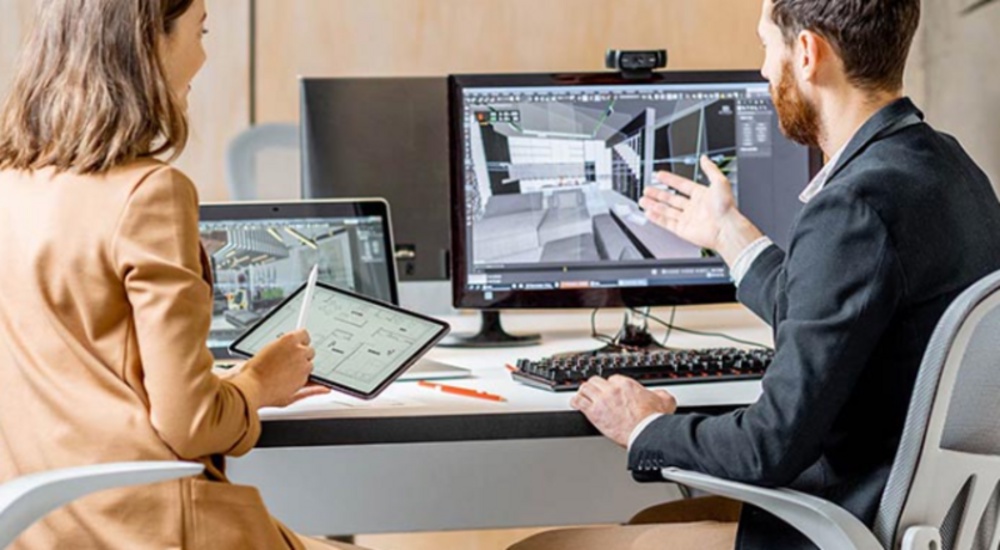Getting to know industry tools is a big part of the learning curve when you're just starting as a UI designer in Web Design Dubai. Various tools and platforms will be required along the workflow to meet your objectives, whether it's communicating effectively with your team or producing animations.
Before we go into the UI toolkit, let's take a look at what UI designers do.
The user's interaction with an interface is what UI design is all about: how do they go from one screen to the next? What kinds of visual cues do they get?
The UI designer makes all of these decisions: they take the UX designer's blueprint and convert it into something visible and engaging. Daily, this includes anything from creating buttons to selecting colours and fonts to prototyping and doing usability testing.
Design tools for UX and UI are rapidly changing.
Every stage of the design and product development process is now aided by a variety of technologies, from early online whiteboard exercises to work on the final product.
The usability and accessibility of these technologies have never been greater, planning and developing web design products, making it easier and more powerful for everyone.
Product development is an important process for all businesses, from small start-ups to large corporations. This necessitates the use of the appropriate tools for the work.
When it comes to generating realistic, working prototypes, the greatest UI design tools will save you the most time and effort.
A UI design tool that is right for you, on the other hand, can help you do so even more effectively, whilst the wrong tool may work against you even if it is considered to be one of the greatest UI design tools overall.
If you want to work in UI design, you need to be familiar with the tools of the profession. You'll learn which ones work best for you over time, but to get you started, we've compiled a list of some of the most popular in the business.
- Sketch
Sketch is the digital design tool that every UI professional must have. Because this is a vector-based tool, you may simply scale whatever you design without losing its crispness. Sketch is more than simply a sketching programme; it can also be used for wire-framing and prototyping.
You pay once for the software and may use it for as long as you like, but you must renew your licence every year to receive updates.
- Balsamiq
Balsamiq is a well-liked tool in the design business when it comes to speedy wire-framing. It promotes itself as the "toll in the middle" solution for designers, product managers, and developers, and it is accessible as desktop or cloud software.
The user interface library is maybe one of the most useful aspects for UI designers—you can pick from a variety of different UI elements and just drag and drop them into the wireframe. Before giving over your prototype to the developers, you may print it out or do usability testing online.
- Zeplin
You must be able to convey your concepts to the development team as a UI designer, and zeplin was created to help you do just that. All you have to do is upload your drawings, and zeplin will develop specifications and recommendations for you.
It lowers the time and effort required to transform your ideas by providing platform-specific code snippets for frontend developers. You can also combine zeplin with slack channels for smoother collaboration and provide notes for developers straight into the platform.
- InVision
For UX and UI designers, InVision is a popular web-based prototyping tool. You may easily transform static design files into high-fidelity, interactive prototypes by uploading them. It's also fantastic for collaboration because clients and other team members may comment directly on your designs, and you can use boards to discuss your ideas with the rest of the team.
They're continually introducing new features, like this craft prototype for smooth sketch-invision integration, and it's completely free to join up. This is one of the industry's most well-known tools, thus it's highly worth using.
- Figma
Figma is a one-stop-shop for creating, developing, and obtaining feedback, with strong editing capabilities and a plethora of useful features.
The limitations function, which adapts your designs as the screen size changes, is very useful for UI designers. It's also very simple to reuse elements throughout your designs with the components feature.
Figma is slightly more expensive than its primary competitors, it is ultimately more cost-effective since it removes the need for several auxiliary tools.
Figma makes it simple to share and construct design systems. It's also one of the few platforms that allow designers to write design system documentation, as well as the sole tool that allows teams to experiment.
This article is made possible by The Watchtower - Web Design Company Dubai.
- Flinto
Flinto is a Mac-only interactive prototyping tool that comes with practically everything you'll need to make your ideas a reality.
Create microinteractions and screen transitions, add video layers by dragging video or gif files directly into your designs, add UI sound effects, and customise scrolling—the list goes on and on. You may also import files from sketch and, lastly, use the free iOS viewer to see how your designs look.
- Adobe XD
Adobe XD is a vector-based user experience design and prototype tool for web, mobile, and even voice! If you're already familiar with the adobe creative cloud suite, you'll be right at home with Adobe XD—an immensely flexible tool that includes a slew of tools for designing, prototyping, sharing, collaborating, and establishing a whole Web Design Dubai system.
XD is available as a mobile app for both Android and iOS, and it is supported natively by Windows 10 and macOS.
Adobe XD is more stable than Figma and supports windows, whereas sketch does not, guaranteeing that it retains its market position. Adobe XD is simple to use, especially if you've used other Adobe programmes before. Indeed, if you already have an adobe creative cloud (opens in a new tab) membership, you may already have Adobe XD.
Designing and passing off user interfaces with Adobe XD is both pleasant and productive, thanks to its remarkably clear user interface and seamless interaction with adobe photoshop, adobe stock, adobe fonts, and more.
While it doesn't have any unique features (at the time of writing), Adobe XD performs what you'd expect it to do, and there's not much to complain about.
- Axure RP
Axure RP is a sophisticated design tool that allows you to create highly interactive HTML prototypes for web, mobile, and desktop applications. Axure RP stands for rapid prototyping, which is the tool's main focus.
Axure makes it especially simple to add elements like dynamic panels, animations, and visual interactions that would normally take a long time to set up.
Like the others on our list, Axure allows several designers to work on the same project file at the same time. Although it’s high-end cost makes it more enticing to businesses, the result is the speedy development of well-functioning prototypes.
So what is the distinction between Adobe XD and Axure RP?
There are five major distinctions between Axure RP and Adobe XD. The ability for team collaboration, Cost, User Interface, Features, Support, and Community Adobe XD offers a more user-friendly UI, but Axure RP appears more professional.
Axure RP costs somewhat more than Adobe XD. Both have communities, however, the Axure RP community is more active.
- Maze
Maze is a robust quick testing tool that enables designers to conduct in-depth tests with or without prototypes, as well as test and validate ideas, concepts, or copy.
The variety of testing provided is extremely beneficial to designers at all stages of the process. Usability tests with open-ended follow-up questions may yield deep user insights, bringing designers and real users closer together than ever before.
Meanwhile, actionable quantitative indicators derived from a/b testing, success rates, misclick rates, and page heat maps help steer designers on the right path.
- Marvel
Marvel is an all-in-one design tool that includes capabilities for everything from design and wire-framing to prototyping and user testing.
Because the programme is so simple to use, it's ideal for quickly creating prototypes and building basic, effective user interfaces.
Although Marvel provides tools for every stage of the design process, prototyping is its core focus. Users may use motions, import designs, add screen components, and do whatever else is needed to quickly develop working prototypes.
While it isn't as complicated as some of the other tools on this list, it is a great alternative for inexperienced designers and developers who want to get up and running quickly.
- Framer
Framer (previously Framer X) is an excellent tool for working on-screen design and building high-fidelity prototypes.
Framer is noted for having a steep learning curve since it requires a basic understanding of CSS and HTML coding for things like interactions and animations. Framer final prototypes, on the other hand, are as close to a finished product as a prototype can get.
While the prototype tool is Framer's main feature, the company has also been working on additional features such as wire-framing and visual design.
Framer is a good all-in-one solution at mid-range pricing since it has built some basic capabilities for user testing.
As we can see from the list above, there are a variety of items that come into the "user interface design tools (UI)" and "user experience design tools (UX)" categories, and many products will fit into both.
All of them, though, aim toward the same goal: assisting designers in creating outstanding digital apps.
Creating your UI toolkit
These are just a few of the tools that a UI designer could use. First and foremost, what kind of initiatives would you prioritise? Do you require tools for creating websites, mobile apps, or both? Naturally, you must also ensure that the tools you select are compatible with the laptop or system on which you are working.
In addition to conducting extensive independent research, it's a good idea to speak with experienced UI designers about the technologies they recommend.
If you attend a solid UI design school, you will work with seasoned specialists in the area who will share their knowledge with you.
Conclusion
Ultimately, the only way to know for sure whether tools are right for you is to try them out, so sign up for as many free trials as you can!
Most products come with their own guidelines and introductions, and video tutorials are a terrific way to master the basics. Play around with a few different apps to see which features and interfaces you're most comfortable with.
You may contact The Watchtower - Web Design Agency Dubai for web design and mobile/web development enquiries or services.


No comments yet